Archive for ‘College’ Category
Organize Your College-Bound Student for Grownup Life: Part 3

Parents, you’re counting down the precious days left with your college-bound students. Meanwhile, they’re counting down until they experience “freedom” and (gulp) adult responsibilities. In recent posts, we’ve covered a wide variety of skills and information to ensure they are prepared for the world beyond having you as a backup ride, bank, chief cook, and bottle-washer.
Organize Your College-Bound Student for Grown-Up Life: Part 1 identified essential legal documents and insurance policies, and reviewed the key financial skills every first-year student needs.
Organize Your College-Bound Student for Grownup Life: Part 2 looked at communication skills, staying safe on campus and off, and the under-appreciated life lessons of mastering laundry.
This third installment of the college life skill syllabus delves into keeping all the time management balls in the air, developing an academic safety net, being a safe car operator, and social etiquette to ensure good relationships. There’s even a smattering of bonus life skills.
We finish up with with a bibliography of reading resources for you and for your college-bound student.
HOW TO MASTER TIME AT COLLEGE
In high school, time is fairly regimented; the bell rings every fifty minutes, moving students on to their next classes. There’s study hall to get a start on homework, and teachers provide periodic, staged deadlines for students to show their progress and keep from falling behind; they turn in a topic idea, then a bibliography, outline, first draft, and finally a completed report. Class periods before tests are earmarked for reviews. Academic prep time is spoon-fed.
In college, the freedom to set your own schedule has the drawback of requiring an adult sense of perspective on prioritizing what’s important (and not just urgent or fun). Wide swaths of free time must be divvied up and self-assigned: for studying new material, doing problem sets, completing projects, and preparing for exams.
Food and clean clothes are not delivered by magic fairies; they may require transportation, funds, labor, and time!
College-bound kids may not want to take advice regarding time management, but try to start conversations to get them thinking about how to:
- Wake up on time — If they can’t count on conscientiousness, encourage them to make breakfast plans with a friend who can swing by prod them. Also, point them toward Do (Not) Be Alarmed: Paper Doll’s Wake-Up Advice for Productivity.
- Develop a schedule — In order to make time for academics, extracurriculars, sleep, exercise, and self-care, discuss the value of time-blocking and planning an ideal week, then tweaking as the semester goes along. Keeping a schedule in one’s head is a recipe for disaster; a paper or digital planner makes sure nothing falls through the cracks. A few helpful guides:
- Highlights from the 2023 Task Management & Time Blocking Summit
- Surprising Productivity Advice & the 2023 Task Management & Time Blocking Summit
- Paper Doll Shares Secrets from the Task Management & Time Blocking Summit 2022
- Struggling To Get Things Done? Paper Doll’s Advice & The Task Management & Time Blocking Virtual Summit 2022
- Playing With Blocks: Success Strategies for Time Blocking Productivity
- Develop and maintain healthy routines to support their goals — Brainstorm ideas for how to ensure healthy habits (exercise, eating actual meals somewhere near meal times, etc.) by linking activities to make a chain of positive behaviors.
- Don’t fight your body clock — In business, we’re often made to feel like there’s something wrong with us if we’re not morning people, but in college, people look askance if you don’t want to party all night. There’s no shame in needing an early night if you have an 8 a.m. class.
- Get out in front of procrastination — We procrastinate because we’re nervous about how something will turn out. We’d prefer our Present Self feeling comfortable; Future Self is on its own.
Explain how to beat procrastination by understanding its causes and then incorporating good planning, prioritizing, and decision-making techniques (like the Eisenhower Decision Matrix), and locating accountability support. These Paper Doll posts can help:
-
- Paper Doll On Understanding and Conquering Procrastination
- Use the Rule of 3 to Improve Your Productivity
- Frogs, Tomatoes, and Bees: Time Techniques to Get Things Done
- Count on Accountability: 5 Productivity Support Solutions
- Paper Doll Sees Double: Body Doubling for Productivity
- Flow and Faux (Accountability): Productivity, Focus, and Alex Trebek
- Paper Doll Shares 8 Virtual Co-Working Sites to Amp Up Your Productivity
They can even try some Study with Rory Gilmore videos, including this one that incorporates the Pomodoro Technique!
I can’t think of a better expert for your college (and college-bound high school) students, especially those with ADHD, than my fabulous colleague Leslie Josel. She’s the one who developed an amazing Academic Planner for middle-grade and high school students, and I interviewed her for Paper Doll Peeks Behind the Curtain with Superstar Coach, Author & Speaker Leslie Josel.
Order Leslie’s book, How to Do It Now Because It’s Not Going Away: An Expert Guide to Getting Stuff Done, before the semester gets too far, and you’ll help your first-year college student conquer procrastination, develop excellent study skills, and really dissipate their stress.
Other real-world manners and etiquette tips college-bound students might not have absorbed:
Dining
- Know which is your bread and which is your drink — Make the OK sign with both hands on the table in front of you. One makes a lowercase “b” (on your left) and “d” (on your right). The “b” for bread means your bread plate goes to your upper left; the “d” for drink means the glass to your upper right is yours. Don’t butter an entire slice of bread or roll and then eat it (except at your own breakfast table). Break off a bite-sized piece of bread, apply butter (or jam, etc.) and eat.
- Wait until everyone has been served (or seated with their dining tray) to eat. Don’t gobble your food. You are not Cookie Monster.
- Don’t rush to leave before your companions are done eating. (If you need to leave to get to class, apologize for not staying until the other person is finished.)
- Know when and how much to tip in restaurants, for pizza delivery, etc.
Social Interactions
- Introductions — Know how to properly introduce yourself and others in a social setting, with first and last names.
- Handshake — Offer a firm (not limp, not crushing) handshake, smile, and make eye contact. (If eye contact makes you uncomfortable, remember, it’s not a staring contest. Connect, then look anywhere in the general vicinity of the other person’s face.)
- Personal space — Respecting others’ personal space in social and professional settings requires situational and cultural awareness and understanding the nuances of physical boundaries. Don’t touch people without asking.
- Phones — Don’t look at your phone when you’re eating or socializing with others unless responding to something urgent. Put phones away at the meal table.
- Thank You Notes — A good thank you note, sent promptly, goes a long way to show appreciation after receiving a gift, being hosted, getting interviewed, or being the beneficiary of an act of kindness.
- RSVP — Explain that not replying to an RSVP inconveniences a host. Replying in a timely manner and committing to that response helps the host plan (financially and logistically).
- Online social interactions — A digital footprint lasts forever, and online behavior matters. Being a jerk online has the potential to ruin a reputation just as much as being a jerk at a party.
- Networking — Your college kid isn’t thinking about the business world, but people help and do business with those they know, like, and trust. Help them see the importance of strengthening connections by sharing personal stories where maintaining connections, being generally useful, and even sending a LinkedIn connection request with a personalized message can mean a lot down the road.
Cultural Sensitivity
Good cross-cultural etiquette means not judging people who don’t follow the above guidelines.
Respect diversity. Understand cultural differences in manners, and be open to learning and adapting when doing study abroad or interacting in other cultural settings.
Use language that’s respectful, inclusive, and kind.
CARE FOR THE CAMPUS CAR
@the_leighton_show The low fuel warning also doesn’t stop my wife from going to @target #teenagers #drivinglessons #driving #parentsoftiktok #funny
Even if your student has been on the road for a few years, being a car owner (or responsible party) is different from driving Mom’s car to school. Car care can be a mystifying area of adulthood.
Oversee that inspections and major maintenance gets done when your student is home for breaks, and jointly go through the recommended auto maintenance schedule in the car’s manual. Help them figure out how to either do basic car care or to get it done professionally.
Teach the basics, like how to:
- Fill the gas tank before it’s only 1/4 full (and not when the gas light comes on). This is especially important if they attend school in wintery locales.
- Fill the tank on a schedule, not when it’s empty, but perhaps every Saturday after lunch. (And don’t try to put diesel in a non-diesel vehicle!)
- Download an app for finding the best gas prices, like Gas Buddy.
- Know how to check the oil before the oil light comes on. Oil and filter changes don’t have to be done as frequently as they used to, due to synthetic oil, but it still must be done.
- Know how to check tire pressure and fill tires properly.
- Know what the dashboard lights mean. — I once heard someone call the tire pressure alert the “Surprise Light.”

- Understand how to check and change fuses, replace windshield wipers, and know when to seek a professional mechanic.
Prepare them for emergencies. They should:
- Know how to jump start a car — If you’re sending your kids off to college with jumper cables, teach them how to use them! Consider also writing out step-by-step instructions and tucking it in with the cables.
- Know how to change a flat tire — Not everyone has the physical strength to change a tire, and not all locations are safe. Spring for a membership in AAA or similar roadside emergency service.
- Know what to do in case of an accident, or if someone breaks their window or steals the car:
DON’T GET SCAMMED AT COLLEGE
According to a study by the Better Business Bureau, 18-24 year-olds are more often victims of scams than senior citizens! Teaching college students to recognize and avoid scams is crucial. Encourage a skeptical mindset.
Common Scams Targeting College Students
Just as I wrote about scams that target seniors in Slam the Scam! Organize to Protect Against Scams, there are many that target college students, including:
- Scholarship and grant scams — Legitimate scholarships don’t ask for fees.
- Student loan scams — Be wary of companies that promise to forgive or lower student loans for a fee. Confirm loan information through the school’s financial aid office or consult government (.gov) websites like Federal Student Aid.
- Housing scams — When seeking off-campus housing, avoid listings requiring upfront payments before touring properties. Use reputable rental sites; don’t send money via wire transfer.
- Job scams — Know that legitimate employers don’t ask for bank information until you’ve been officially hired. Be wary of job offers promising high pay for minimal work.
Watch for Red Flags
- Urgency and high pressure tactics — The world is full of deadlines, but scammers use fear of missing out to create a sense of urgency. Don’t become a victim by being pressured to act quickly without time to analyze what’s happening.
- Unsolicited Offers — Be dubious about any unsolicited contact from outside of the school’s usual resources, whether by email, phone, or (especially) text, whether seeking personal information or offering services, funds, or assistance.
- Unusual Payment Methods — Students need to understand that payment by check or credit card is normal, but requests for payment by gift card, wire transfers, or cryptocurrency are hallmarks of scams. Legitimate transactions use secure, traceable payment methods.
- If a financial loan, grant, paid internship, or side hustle seems “too good to be true,” especially if the college’s financial aid office or academic departments doesn’t know anything about it, it’s likely a scam.
Always do independent research and verification. Check websites, Google to make sure phone numbers and addresses aren’t fake, and seek unbiased reviews. Consult trusted sources, including professors and advisors, college financial aid and work/study divisions, and yes, parents.
Online Safety
GenZ will be dubious that parents can advise them on online safety, but talk about:
- Privacy Settings — Adjust social media privacy to limit personal information visible to the public.
- Phishing Scams — Be wary about emails, texts, or social media direct messages that appear to be from trusted individuals or institutions but ask for personal information or money, or contain suspicious links. Pick up the phone and verify by calling people or institutions directly.
- Secure Websites — Look for “https://” in the URL and the padlock icon in the URL bar before entering personal or financial information!
Report Scams
- Report scams to campus security, local police, and organizations like the Federal Trade Commission (FTC) fraud division, the Consumer Financial Protection Bureau, and the U.S. Department of EducationOffice of Inspector General (OIG).
- Document — Keep records of all suspicious communications and transactions to support resolving issues.
RANDOM LIFE SKILLS
The Adulting Manual by Milly Smith
Organize Your College-Bound Student for Grownup Life: Part 2

From living with strangers to not having parents and teachers overseeing study habits and self-care, college is a melange of delightful freedom and terrifying responsibility.
Last week, in Organize Your College-Bound Student for Grown-Up Life: Part 1, we reviewed the serious side of what to make sure your kids have and know before heading off to college. We covered making sure they know their Social Security number by heart, having a a handle on important contacts and key medical information, and getting registered to vote and knowing how to exercise their rights to vote.
We looked at legal documents, like Power of Attorney for Healthcare (AKA: healthcare proxy) documents, FERPA waivers, and HIPAA releases, which in combination ensure that a college student has someone they trust looped into their medical situations and able to make medical decisions if they are unable to.
We also started developing punch lists of adulting information and skills, starting with the essentials related to financials and insurance.
And, because people pay more attention to serious things when they can take a moment to breathe, I included a few Chip Leighton “texts from college students” videos from The Leighton Show. More are peppered in this post. (As with last week, click near the lower left portion of the video to un-mute.)
@the_leighton_show Posting one more for all the parents dropping kids off at college #teenagers #college #freshmanyear #text #funny ♬ original sound – The Leighton Show
HOW TO COMMUNICATE BEYOND TEXTS AND EMOJIS
Recently, I was surprised to find that most younger people don’t ring doorbells or knock; they text when they pull up outside. (Honestly, to keep from waking babies or making dogs go nuts, this is pretty smart!)
Gen Z students have often managed to get through life without learning some adulting skills with regard to communication and interaction. Before dropping them off on campus, make sure your kids have these skills.
- How to write, address, and mail a letter. Somewhere around fourth grade, they taught us how to write a “friendly” letter and a business letter, including the entire format of date, “inside address,” salutation, body, and appropriate closing. They also taught us how to address an envelope, where to put the return address, and where to place the stamp. Apparently, this is not taught anymore, as evidence by various Reddit threads, including the one below.
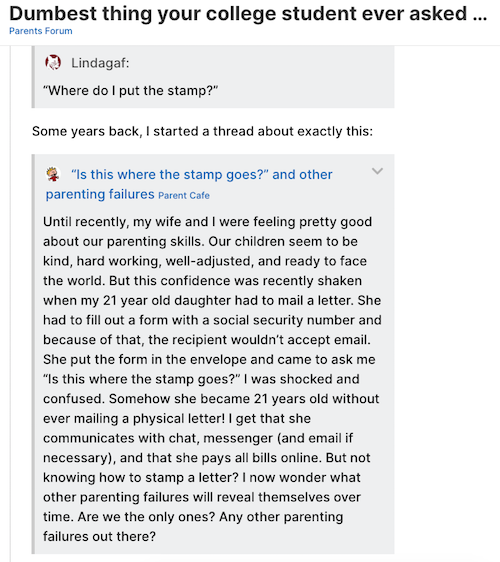
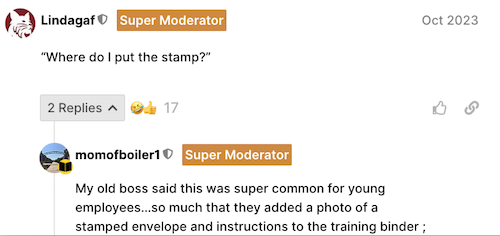
- How to sign their name in cursive. Some elementary schools stopped teaching cursive in 2010, though there now seems to be a backlash against the removal. Whether or not your student knows how to write (even remotely legibly) in cursive, make sure they understand how to sign their legal name.
- How to write a grown-up, professional email. Use a clear subject line that indicates the purpose of the message. Write in full, grammatically-correct sentences. Spell check. Don’t use emoji or slang. (Seriously, no cap.) Except in a rare case when asked to do so, don’t address female professors as “Mrs.” That’s a social honorific, and this isn’t kindergarten. They’re either Professor or Doctor or (if TAs or adjuncts) Ms. (unless they ask you to use their first name). Don’t address professors of any gender as “Bro” or “Dude.” (This goes for verbal communication, too!)
- How to schedule an appointment (and how to reschedule or cancel one) — Your kid knows how to log into a web site and pick a time slot, but Gen Z is particularly phone-averse. Role play with them how to make a call to request an appointment with a doctor or dentist, to get their hair cut, to have their car evaluated or repaired, etc. Teach them how to summarize why they’re calling (whether to a gatekeeper or for voicemail).
- How to leave voicemail — Guide them not to say, “Um, so this is Joe. I need you to call me back” without any hint of why. Young people are often nervous about calling strangers, so they should plan the message, mentally or even in writing. Encourage them to think about why they’re calling — and what result (information? permission? assistance?) they need.
This is good advice for grownups, too, especially those suffer from social anxiety. Practice eases the process. State your name, phone number, and reason for calling so the recipient can do their legwork and get back to you at their convenience without wasting their time (or yours on a cycle of call tag).
- How to write a thank you note — In case it’s been a while since you impressed upon your child the importance (and power) of this habit, share a classic Paper Doll post, Gratitude, Mr. Rogers, and How To Organize a Thank You Note and remind them, once again, that grandparents are more likely to send gifts (money? Apple gift cards? freshly baked cookies?) when thanked for their actions.
- How to apologize authentically and effectively — Whether your student eats her roommate’s last yogurt or commits a more unpardonable act, don’t let kids go off to college without this essential life skill. Make sure they understand that “I’m sorry you got mad” is not an apology.
There’s an easy formula:
-
- Use the words, “I’m sorry” or “I apologize.”
- Take responsibility and state what you actually did wrong.
- Illustrate that you understood the impact of your actions on the other individual.
- Explain how you’ll ensure it won’t happen again, or show how you’ll make reparations.
STAY SAFE, ON CAMPUS AND OFF
There will likely be a safety workshop during orientation week. Encourage your student to attend and to understand what kind of built-in infrastructure the campus has for safety.
Be Safe When Walking Around
When I attended college, we had a Blue Light service, poles throughout campus with blue lights at the top and telephones connected to Campus Safety. You could make a direct call (without a coin) or just hit the handsets as you ran from a horror movie monster (let’s ignore the more serious alternative) and campus safety peer volunteers and personnel would come out in force. There were also free “blue light buses” on campus to ferry people home safely at night. I was delighted to find out that this system is still in place, with some modern tech additions.
Nowadays, most campuses have high-end safety systems and apps. Still, encourage students to program the campus security number into their phones and know how to request an official campus peer escort. Other advice to impart:
- Don’t walk alone, especially at night. Take heavily-trafficked routes with good lighting.
- Let your roommate or BFF know where you are headed, and program your phone to share your real-time location (one time or ongoing) and ETA:

- You’re probably not going to convince your college kid to never ride with strangers, but you can fund an Uber or Lyft account to make it easier to get home if they’ve gone to a concert or club off campus. You may also want to discuss GrownandFlown.com’s The 7 Ride Share Safety Tips Every Teen Needs to Know.
Be Safe in Your Dorm and When Out and About
- Lock your room when not in it (so you don’t walk in to any surprises), or when you are, but lots of others aren’t around.
- Close and lock your windows when you are sleeping or not in your dorm, especially if you’re on the ground floor.
- Program campus housing numbers into phones.You might be locked out of the dorm without keys or key cards or wallet, but nobody goes anywhere without their phones anymore.
Hopefully, you’ve had lots of conversations with your teen about how to have situational awareness when walking around (or studying, especially alone), how to be safe at parties, and how to figure out whom to trust. These kinds of skills can take many years to develop, but open conversations are the beginning.
This is an organizing blog, not a parenting blog, but I fervently hope that just as many parents will teach their sons the importance of not victimizing as they teach their daughters how not to be victims.
For more in-depth advice, You may also want to share:
- How to Stay Safe on a College Campus (US News & World Report)
- 9 Ways to Stay Safe on Your College Campus (Safewise)
- 10 Campus Safety Strategies for College Students (RAINN)
- Campus Safety Guide (Best Colleges)
Be Safe During Emergencies
Personal safety doesn’t just include watching out for bad guys. Your kids had fire drills in school, but they’re used to following an grownups instructions. Now that they’re the grownups, make sure they know:
- How and when to call 911 vs. the police non-emergency line vs. the campus health center vs. the resident hall director).
- When to go to the ER vs. urgent care, or the health center, or a family doctor (or to call the health insurance Ask-A-Nurse line…or Dr. Mom)
- How to use a fire extinguisher. When I visited my old campus for my reunion in June, I saw that fire extinguishers had changed; they were neither the massively heavy ones I recalled from my youth nor the can-of-whipped-cream style I have at home. Have them read the instructions.
- Pay attention to the exits when entering classroom or building, and know the safe exit path for the dorm.
While it’s designed primarily for families, your student might find Paper Doll Organizes You To Prepare for an Emergency to be a useful starting point.
Be Safe When Interacting with the Police
If you or anyone in your family or close circle is Black (or you’ve ever watched a Shonda Rhimes show), you almost certainly know about The Talk and have had it, and multiple iterations of it, before sending a child to college.
However, if you are not a member of a visible minority, your have probably been privileged to not have to think about this. Role-model and practice so your college-bound student knows what to do if they are stopped while driving, riding, or walking — or if the police come to their dorms to make inquiries — or if they participate in a campus protest.
If you watch police procedurals, you’re probably familiar with the concept of swatting, the practice of making a prank call to emergency services in order to get armed police officers dispatched to someone’s address. It happens to congressional representatives and judges, but it also happens to random people, including college students. It apparently started with online gamers being targeted by others playing the game.
Almost nobody gets through life without interacting with police officers, and whether it’s municipal police or campus security, student needs a skill set for handling potentially scary interactions.
Again, this post is about organizing adulting skill sets. Beyond, “stay calm and don’t escalate,” I won’t advise you regarding what you should tell your children, but encourage you to talk to them about how to do it safely and with some starting points:
- ACLU’s Know Your Rights: Stopped By Police (ACLU)
- Dealing With Campus Police: Top 3 Legal FAQs For College Students (FindLaw)
- Black Parents Describe “The Talk” They Give to Their Children About Police (Vox)
HOW TO STAY HEALTHY AT COLLEGE
Nobody gets to college without having had a booboo or a cold or a stomach bug, but a lot of parents find that their newly independent children experience a sense of amnesia once any of these things happen at college. Use the following as prompts to make sure your kids are ready for dealing with the owies of adult life.
Be Prepared for Medical Ickiness
Everyone eventually gets the crud, and being away from home makes it worse. However, knowing how to handle the experience makes having the yuckies marginally better. Make sure students know:
- How to treat a sore throat, toothache, upset stomach (and related intestinal distresses) and minor viruses.
- How to recognize symptoms (like a high fever) requiring professional medical intervention.
- How the dosage on OTC and prescription medicine works. There’s a reason why it says “take no more than X in 24 hours” — because people thought X “in one day” meant they could have X at 11:45 p.m. and again at 12:15 a.m. Medication doesn’t follow a calendar.
- How to fill and refill a prescription — If you’ve always done it for them, your student may not know about prescription numbers or number of refills available.
- How to take maintenance medication or perform health activities without you having to remind them — You won’t be able to ask, “Did you take your ADHD meds today?” or “How many times did you check your blood glucose today?” Your student knows how to set an alarm on the phone, but walking them through how to label the alarms to make it clear which meds are for that specific alarm could help. Even “experienced” adults with established schedules forget to take meds when on vacation; college schedules are stress-inducing and can lead to forgetting, so help them help themselves.
- Where the nearest 24-hour pharmacy is, before they need it — At some point, your student will need Pepto or condoms or feminine sanitary products or a COVID test at 3 a.m. Being prepared is half the battle.
- How to do First Aid — Not everybody was a scout. I’m often shocked by people (OK, men. It’s always men) who don’t know how to properly clean a small wound, remove a splinter, or put on a bandage. You can’t anticipate everything — minor and major — need to know, so share the National Safety Council’s First Aid Video Library link. It’s impressive.
- How to fill out health insurance forms at the doctor’s office. — Seriously, your kid should know their blood type without having to call and ask you. (That’s why I told you last week to give them copies of their medical history information.)
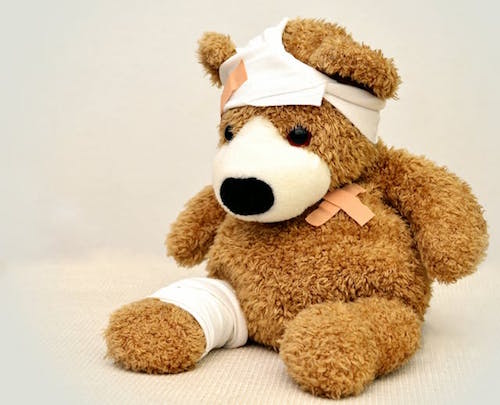
Booboo Bear Photo by Pixabay
How to Deal with College Life Ickiness
- How to safely drink/consume things you’d prefer they didn’t partake of at all.
- How to help a friend who has unwisely or unsafely imbibed or consumed something. This might range from treating hangovers to knowing how to use NARCAN to the calling 911!
- How basic hygiene works. Wash hands! — Feel like you shouldn’t have to explain this to an adult? Reread Organize Your Health: Parental Wisdom, Innovation, and the New Time Timer® Wash. Yes, it’s from the first year of COVID, but the unfathomable reminder that people forget to wash their hands is timeless.
- Wash water bottles. — We didn’t even have bottled water when I was in college. Now, Stanley cups (not the hockey kind) are everywhere. And no, just because there’s only water in it doesn’t mean it’s clean. Microbes are icky. (Secret cleaning trick? Denture tablets!)
How to Deal with Grown-Up Issues
I hope you and your student have the kind of relationship where you can discuss “adult” things without (too much) awkwardness. I was lucky that Paper Mommy always made a safe space to talk about difficult issues, but not everyone has that ability (or that parent).
You may have had that other version of “The Talk” with your student in adolescence, but whether you’re dealing with reproductive care or mental health or anything sensitive, at the very least encourage your college-bound student to talk. Say that you hope they’ll talk to you, but even if not, that there are many safe places (starting with the campus health center) to find accurate information and supportive care. Some of the issues they may need to contend with include:
- Safe sex
- How to use contraception properly
- How to say no, at any point in the process, and maintain healthy boundaries
- How to be secure consent and step back if there is no consent
- Mental health
- How to recognize the signs of depression or anxiety (or other mental health concerns) in themselves and their friends, including social isolation or an increase in risky behaviors, or changes in academic performance, mood, sleep or eating habits, or personal hygiene.
- Where to seek mental health help, on campus or virtually
- Self-care — Remind your beloved child of their options for caring for their mental health, including:
- taking breaks
- exercising
- getting out in nature
- talking to friends
- journaling
- calling home
- speaking with a therapist
- understanding that everyone has problems, they are manageable, and there is support available
For your purposes, peruse Empowering Wellness: Supporting Freshman Health and Well-Being from College Parents of America, and perhaps get your kid a copy of something like The Greatest College Health Guide You Never Knew You Needed: How to Manage Food, Booze, Stress, Sex, Sleep, and Exercise on Campus before they leave for campus.
Organize Your College-Bound Student for Grown-Up Life: Part 1

In a matter of weeks, fresh-faced first-year college students will be headed off to begin their adult lives.
Everyone needs a little organizational guidance on this path. Last week, I re-shared a popular post from the Paper Doll vault, Paper Doll & Real Simple Organize Dorm Rooms: SUPER-EXTENDED Edition, looking at how to organize a dorm room for maximum comfort and productivity.
There’s a lot of support out there for getting the right stuff to make college life easier. IKEA has created a stellar master list of what to take to college that likely exceeds whatever your student’s department of residence life has forwarded. If you care mainly about having the right electronic solutions, you can scroll through pieces like Back to School — 10 Cool Tech Gadgets for 2024.
Taking advantage of the “college lists,” reminiscent of the photocopied (and previously, mimeographed) lists of teacher’s required school supplies, can put most parents and students on a fairly level playing field. Well, at least in terms of the tangibles, like basic creature comforts necessary to sleep, study, and snack while paying at least a modicum of attention to personal hygiene and health while at college.
The stuff is one thing. However, not all 18-year-olds arrive at college with the same levels of maturity, knowledge, and awareness of the world. TikTok, Instagram, and YouTube sensation Chip Leighton of The Leighton Show hit it big the last past few years with his series of videos of funny texts from teenagers.
But Leighton really caught my eyes with the texts from college students. These texts, and the rush of comments from parents illustrating their own young people’s texts, help us realize that parents and guardians may need to do more than they realize to prepare offspring for independent life on the planet.
Some things are universal — students arrive at college not having a handle on how to do laundry or manage their finances. But the deeper I’ve gone into talking with clients with kids at college (and, yes, reading the hysterical — and embarrassing — stories from parents in Leighton’s comments sections), I’ve realized that there are ways in which kids are ill-prepared for college (and life beyond) in a ways that adults may not realize.
Today’s post and the rest of this series is a starter kit for the issues to discuss with your college-bound Gen-Zers before they risk endangering their lives, messing up their financial histories, or embarrassing themselves in front of age cohorts who have been better prepared for life “in the real world.”
ESSENTIAL INFORMATION AND PAPERWORK
Before we get into what your college students need to know, we should look at what documents they need to possess and understand.
Social Security Number
If you’re an American, your kid already has Social Security numbers. But do they actually know it?
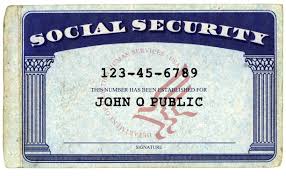
This is the number you most need to memorize for the next six or more decades. Once at college, students will find they need to provide a student ID number and Social Security number on forms all the time. If they haven’t memorized it as a result of the college application process, now is the time to help them remember it.
You’ll have to discuss whether it makes sense for your student to take the actual card to school, or if it’s best kept safely in the family home until or unless they need it for official reasons. If they do take it to school, remind them that it shouldn’t live in their wallet or anywhere it could be lost or easily stolen.
Contact information for the important people in their lives
Yes, college-bound students mainly text people, but at some point, you might point out that if they send a real letter (or even a postcard) to Grandma, she might be inclined to send back money or a tin of cookies or some sort of care package.
College students need to have phone numbers, email addresses, and mailing/shipping addresses at the ready. And while yes, they can text Mom and Dad for the answers, warn them that they may end up as an example on Leighton’s TikTok or Instagram page!
Unpacking: Paper Doll Explores a Video Game About Organizing

[Editor’s Note: This is not a typical Paper Doll post, but it is about organizing, so don’t worry that I’ve changed the focus of the blog. Also, if you click on any of the links in the first few paragraphs and get distracted playing classic games in your browser, don’t forget to come back and read the rest of the post!]
UNPACKING

I have limited experience with video games. Which is to say, I played the tennis-like Pong at a friend’s house when it first came out around 1972 and delighted in PacMan (and Ms. Pacman) while waiting for my Pizza Hut meal to be served, during my adolescent years.
And I even plunked myself down to play Super Mario Bros. when I was in graduate school and needed something obsessive and concentration-focusing to take my mind off what the heck I was going to do with my life when graduate school was over.
But game strategy, manual dexterity, competitiveness, and the ability to bonk a cartoon plumber’s head upward onto a brick to make a mushroom appear (if I’m recalling correctly) — none of these have ever been my strong suits.
In the past three decades, my interaction with video games has been limited to helping my clients pare down their video game collections, organize what they keep, and sell or donate the remainder. I haven’t played, or had any desire to play, any games until last week, when Australian game developer Witch Beam released Unpacking. My Google News feed knows me too well, and upon last week’s release, I was inundated with articles and reviews about this intriguing game.
The company describes Unpacking as a “Zen puzzle about unpacking a life.”
The game has eight chapters or levels, each corresponding to a move to a new “home” — a childhood room, a college dorm, one’s own apartment, sharing a space with a significant other, etc. — all for an unnamed, unknown protagonist. It starts in 1997 and continues forward to today. As players, we are never explicitly told the story of this character, but through her possessions, a certain intimate bond is formed.
The game has been described as “part item Tetris, part home decoration.” You select digital cardboard boxes, open them, and through the game, put the items away. There are pre-ordained slots or shelves; the game is designed as a puzzle, and the goal isn’t to throw everything higgledy-piggledy but find the logical home.
To move to the next level, you need to generally put things where a reasonable person might think they should go. That said, as part of the accessibility features of the game, you can apply the “allow items anywhere” option to eliminate the puzzle element. With this choice, you can’t really put an item in the “wrong” place any more than you could in your own home. (Still, please don’t store extra pantry items or clothes in the bathtub; we professional organizers have seen that in the real world, and it’s just not a great option.)
So, just like at your house, you can put things in weird places. And while I haven’t seen a treadmill or Peleton in the game, I’m betting that just like in real life, you can hang your clothes on exercise equipment. As a player, you get to decide where things belong, but you have to obey the laws of physics and geometry. You can’t fit square pegs in round holes or ten pounds of whatever into a five-pound bag.
I find it appealing that there’s no competition and no timers counting down. But there are, apparently, 14,000 different audio sounds to go along with tucking items in nooks and crannies, setting a toothbrush in a water glass, arranging books on shelves and supplies in drawers, and so on. If you lift a T-shirt to a hanger placed on a rod, the shirt hangs; move it lower to a stack of shirts, and it self-folds. (If only actual unpacking, organizing, and indeed, laundry day, were so magical.)

In addition to putting things away (that is, giving them homes), you can change the color signature of the room, add some on-screen stickers to decorate, take photos of a completed room, and add those photos to a scrapbook, complete with a “handwritten” description of your move-in experience.
Here’s a peek at the game’s launch trailer:
Throughout it all, there’s a soundtrack from a BAFTA (British Academy of Film and Television Arts) award-winning composer, Jeff van Dyck. If video game soundtracks are your thing (Yes, I’m looking at you, my friend Chris!), you can listen to Unpacking’s soundtrack on Spotify and purchase it in all the usual music-buying places like Amazon, Apple Music, Bandcamp, etc. (And no, Chris, I’m not listening to this in the car on any road trips.)
Warning: I should also note that, assuming you’re reading in North America, there will be some oddities in the rooms and homes in Unpacking. The refrigerators are not the full-sized ones we have, but those smaller, under-counter ones that are barely bigger than dorm fridges. The bathtubs have the glass half-walls I saw in Europe; I’ve yet to figure out how one manages not to soak the half the bathroom, but at least there’s no need to run any water in the actual game.
I’ve seen reviews calling the game calming and endearing, but also cathartic and moving. (Of which, I have more thoughts, below.) As a professional organizer, of course, I found this tweet hopeful:
Y’all, I already knew @UnpackingALife is a great game, but my daughter is cleaning her room and I was impressed with how much better it looks than normal.
She told me “Unpacking really helped.” Holy crap ? Best game ever!!!! pic.twitter.com/WQNhT3fHd7
— Dr. Ashley Godbold ????? (@ashleygodbold) November 6, 2021
And for those who wonder how much detail is available to organize exactly how and where you want things to be, this tweet gives you a sign:
We definitely didn’t expect this kind of creativity from our replay feature, but we love it so much! ??
Credits: @carellogyhttps://t.co/wZe1SQpICc pic.twitter.com/115WshTfLj
— Unpacking ? Out NOW! (@UnpackingALife) November 7, 2021
Unpacking is available for a variety of platforms, including Windows, Mac, Linux, Nintendo Switch, and Xbox One and runs $19.99.
ACCESSIBILITY
In the real world, unpacking and organizing a new home, whether a dorm room, a studio apartment, or a multi-bedroom family house, can be a massive headache. Imagine how much more difficult is must be for those with physical disabilities or distracting cognitive challenges (ranging from ADHD to traumatic brain injury). This is just one reason why many clients call in NAPO or NASMM professional organizers who specialize in relocations to work some video game-like magic in setting up a new space.

I can’t be the only person who gets flashbacks to Bewitched watching this sped-up kitchen unpacking/organizing scene play out. Seriously, compare it to Samantha Stevens working her tinka-tinka-tink:
There are no in-game professional organizers, but Unpacking‘s developers prides themselves on its accessibility features.
For those needing visual assistance, the user interface buttons can be enlarged, and you can zoom in on the screen; if you’ve made a booboo, the red “invalid” outline (remember what I said about the laws of physics?) can be changed to a different color. And you can disable the animation feature for room-swapping (in case you unpack a box of kitchen items when you’re in the living room) to avoid motion sickness.
In terms of audio assistance, the game lets you operate soundtrack music and sound effect volumes separately, and there are no audio-exclusive cues for game play, so players who can’t hear don’t miss any of the essential game features.
For cognitive accessibility, the game has no penalties; there’s minimal text, and reading skills (in English or otherwise) are not required in order to play. And, as mentioned, you can turn off the puzzle angle to be allowed to put things anywhere.
There are also a variety of mobility-related accessibility features. None of the actions require pressing more than one button at a time, clicking-and-dragging, holding down buttons. Computer versions support playing via a mouse and keyboard, a game pad, or touch (“on supported hardware,” they note) and you can play one-handed with just a mouse. The Nintendo Switch version of the game supports (and I quote, because I have no idea what this means), “gamepad, touch, and gyro in two-handed and one-handed configurations.” Controls are re-mappable when necessary to support a user’s accessibility needs.
While Paper Doll is neither a gamer nor a reviewer, I think it’s important to accent accessibility features in products, and while this does not arise often when I talk about notebooks and storage options, I intend to be more cognizant of such issues in future posts.
UNPACKING THOUGHTS ABOUT UNPACKING
Having missed three decades of video game development, I am, at best, only peripherally aware that not all games are multi-player shoot-em-ups and car-racing (and crashing) extravaganzas. Certainly I knew about The Sims, a series of simulation games where players create virtual people, build them homes (and families) and play with their careers, activities, and moods and desires.
Apparently, this approach is called a sandbox game, an open-ended type of video game where players have a freedom of movement for their creations and there are no pre-set goals. (If only we humans felt that much ease in creating our lives and risking change!) The popular Minecraft, with it’s blocky 3D people and infinitely expanding world of raw materials, tools, and create-able structures is similar.
Unpacking feels like it belongs in a world tangential to these sandbox games; there’s freedom of movement, no timers or competition, and you can’t lose your character’s life by unpacking things in the wrong order or organizing things “wrong.” But like real life, there is a very solid goal for you as the in-world character: unpack in an organized way to live your life.
In Vice‘s Unpacking Is a Lovely Game About the Power of Seemingly Mundane Objects, Moises Taveras has created a great introduction to the game beyond the broad strokes. Through it I learned some spoilers and realized that there was more depth of insight to be had beyond how many frying pans could be fit into a cabinet:
The “challenge,” a term I’ll throw around incredibly loosely, becomes finding where everything fits best. It’s a logic puzzle, so as long as you’ve been in a kitchen, a bedroom or bathroom, you’ll be able to sufficiently reproduce a functional home. … There’s a joy in getting it all right, but the greater one to me was playing a game that, in bits and pieces, understood the relationship we build with the things we collect.
But there’s more. After I learned of Unpacking, I started reading every review I could find, and what’s particularly gripping about the game is how you get to see the protagonist’s life unfold through her possessions (and those with whom she shares her space). It reminded me of Sam Gosling‘s book, Snoop: What Your Stuff Says About You.
Vibrant and Vertical: Organizing Paper for Back-to-School
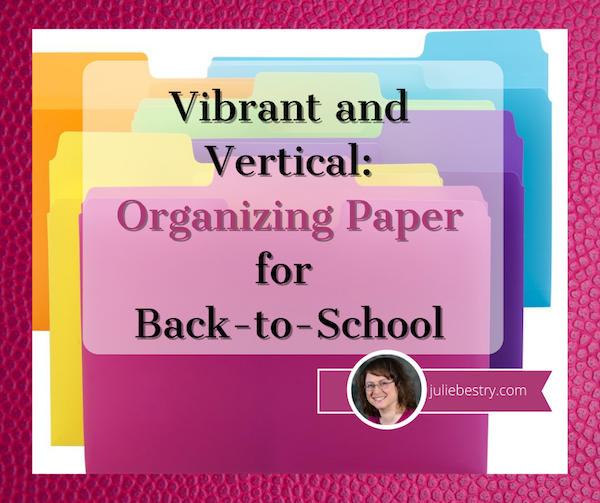 What time is it? (No, this isn’t a follow-up to my Does Anybody Really Know What Time It Is? 5 Strategies to Cope With Pandemic Time Dilation from May 2020, though that may be worth a visit — for all of us.)
What time is it? (No, this isn’t a follow-up to my Does Anybody Really Know What Time It Is? 5 Strategies to Cope With Pandemic Time Dilation from May 2020, though that may be worth a visit — for all of us.)
It’s Back-to-School Time! (If you said “Howdy Doody Time,” thanks for playing our Boomer Edition!)
THE ASPIRATIONAL PROMISE OF NEW SCHOOL SUPPLIES
After almost 18 months of weirdness and boondoggles, kerfuffles and plague-related malarkey, time has little meaning. But really and truly, it’s back-to-school time. And reminders are everywhere. Leaving aside the specific anxieties of returning to school in this (oh, man, I’m going to say it) unprecedented era, the new school year (whether you’re 5 and entering kindergarten or 55 and going back to finish a degree) holds both panic and potential. We may joke about it, but this tweet holds so much truth!
kids went shopping for school supplies and I am pleased to report the pure, uncut optimism of a new trapper keeper in a kid’s hands for the upcoming school year “is going to finally change EVERYTHING and keep me organized for once!” is still alive and well
— Matt Haughey (@mathowie) August 14, 2021
Yes, friends, Mead is still making those Trapper Keepers, the basis for so many our searches for perfect organizing systems in adulthood. Be honest, if you could find something that reflected your personality and offered the flexibility a three-ring binder, hole-punched two-pocket folders, a clipboard, and a Velcro closure, wouldn’t you carry it? Or drive it? Or marry it? (Just me?)
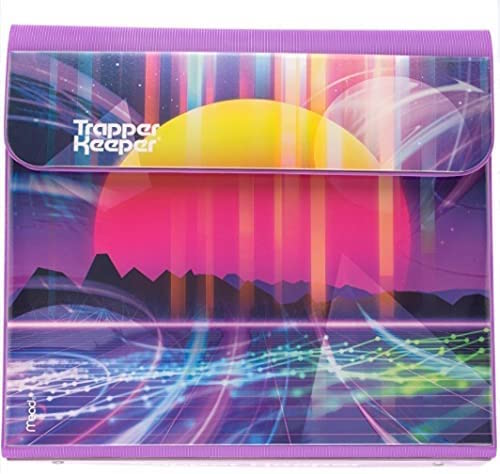
Personally, I always liked those back-to-school days, at least the ones in August, a full month before we Western New Yorkers went back. (Here in the Southeast, kids have been back at school a few weeks in 90° heat. Oy.) August was prime aspirational time. It was the back-to-school issue of Seventeen Magazine, with everything wool and plaid and new.
Our schools didn’t provide lists of what was required for class until the first day of school, but that didn’t mean I was willing to wait. I loved this time of year, and dragged Paper Mommy into the void — I mean, into the school sales. And I vehemently insisted on getting everything all-new every year, even these:
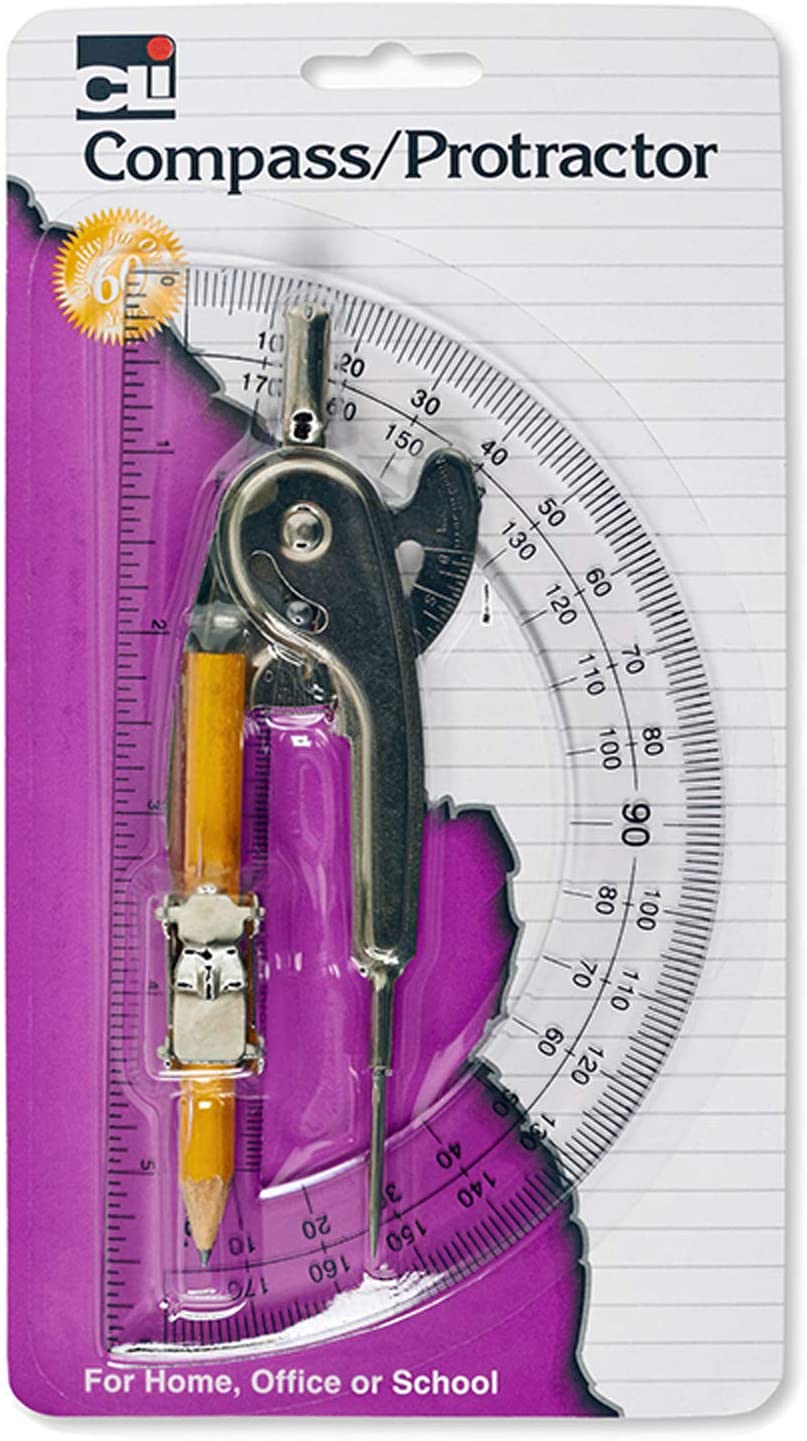
(You know you had them. You know that you probably have no recollection of how to bisect an angle and probably couldn’t figure out what to do with either the compass or the protractor right now, short of making a circle and then cringing when the point of the compass went skittering across the table, making that screechy noise.)
But anyway, do as I say, not as I did. Better yet, do as my colleague Amy Slenker posited in her excellent blog post, 7 Easy Ways to Get Organized for Back to School when she noted, “June scissors work in August, right?” Right!
Of course, as adults, we know that motivation can come in all shapes and sizes, and when the idea of sitting at our desks bring misery, a new set of never-before-used file folders and a snazzy new planner can ramp up our enthusiasm. Also right!
Somewhere in between buying all new everything (even though some things never left your cubby between September and June) and using the same-old, same-old, there’s a sweet spot. So today, we’re just going to look at a few things that might make back-to-school for students of all ages just a little more colorfully delightful.
OPT FOR WHAT’S VIBRANT AND VERTICAL
There’s lots of research showing that color can impact mood. Greens are calming, while reds are stimulating. Studies show that blue “encourages intellectual activity, reason, and logical thought.” Yellow is associated with happy moods, self-esteem and playfulness. While fashion designers may occasionally opt for greys and blacks to convey sophistication, unless your student is a goth (are there still goths?) adding a little vibrancy and color can open up some opportunities, motivationally-speaking.
Color grabs our attention, conveys meaning, and clarifies boundaries. It also just makes us happy. For example, what kind of feeling washes over you when you see this picture?
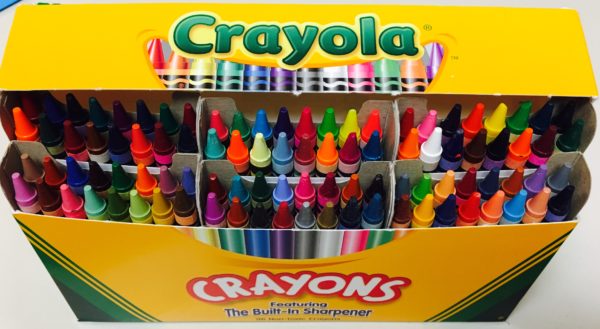
Optimism? Excitement for new beginnings? I took a new 64-box of Crayolas off to college with me in 1985, and I guarantee you I was not the only one!
In addition to the vibrancy of great colors, another boost for students, whether they’re in elementary school or grad school, is the advantage of the vertical hold. We’ve talked a LOT over the years about how vertical solutions aid in organizing, but the key is that when our resources stand attention, we pay attention to them and are less likely to let them get cluttered..
ORGANIZE PAPERS COLORFULLY
College students might appreciate something that keeps papers organized by class, fits squarely in a backpack, but can be displayed easily in a dorm room (their own, or their study-buddy’s) or an empty classroom.
For something both elegant and bright, the Smead Cascading Wall Organizer might be just the ticket.
A revamp of the the classic version, this colorful Gen 2 organizer can hang on the wall or anywhere from a nail, hook (you sent your kid to college with a variety pack of Command Hooks, right?) or even a hanger to reduce clutter on the desktop.
In durable, bright, and easy-to-clean polypropylene, the six colorful (yellow, orange, fuscia, green, blue, and purple) letter-size pockets can be removed to take to class, the library, or an extra-curricular meeting. (Each holds 50 sheets.)
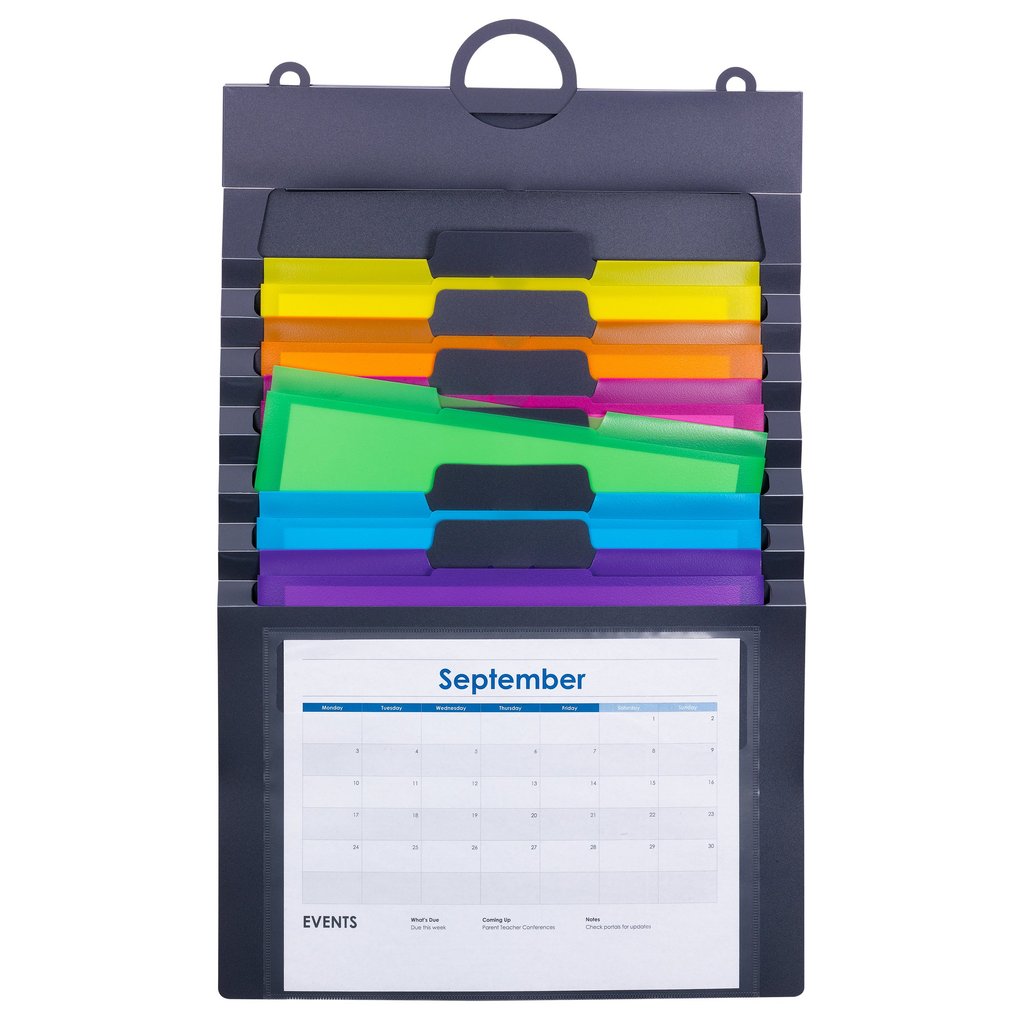
Use the clear front pocket to show the current month’s calendar, a project timeline, or a photo of far-flung friends. There’s a 3-part hanger (use one loop or all three), and an elastic cord closure for putting it all together and stowing it away.
The whole thing is PVC-free and acid-free, and measures 14 1/4″ wide by 24″ high (when fully expanded). Available directly from Smead for $17.99, or you can find it on Amazon for $11.29.
There are two variations on the theme if these brights are too vibrant for you or your student. There’s a pastel version of the Cascading Wall Organizer (well, it’s translucent, but the folders are pastel), also $17.99 at Smead or $13.78 at Amazon:
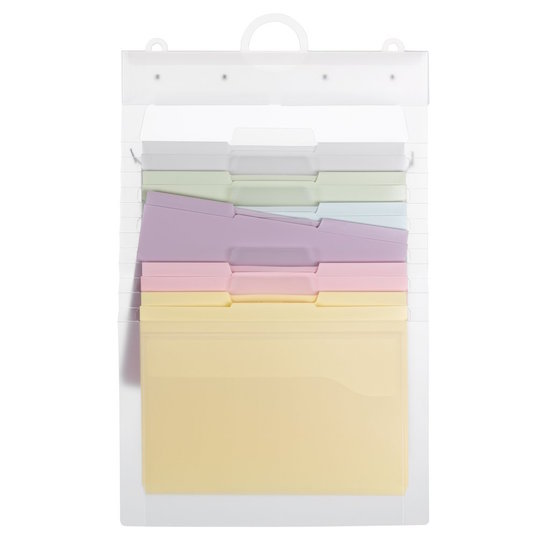 as well as one with jewel tones for $13.99 (which is Paper Doll’s personal favorite, in case you were wondering).
as well as one with jewel tones for $13.99 (which is Paper Doll’s personal favorite, in case you were wondering).
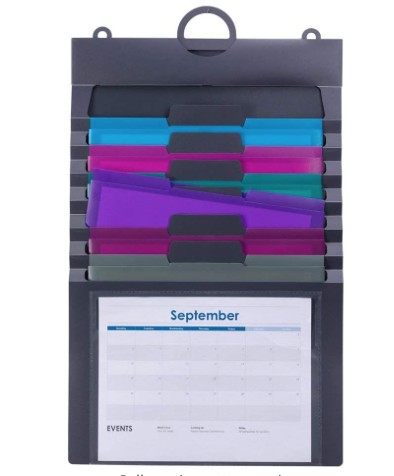
The Container Store has a similar product, its Multi-Color Cascading 6-Pocket Letter File Wall Organizer Tote.
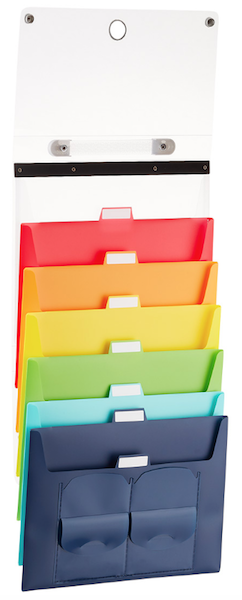
It measures 13 3/8″ wide by 10 1/2″ high, and when it’s not fully extended, it folds and collapses into a 1 1/2″ thick tote. Two snap closures open to reveal six cascading pockets (red, orange, yellow, green, teal, and dark blue) that hold letter-sized interior file folders (sold separately). You can label the tabbed pockets, and there’s both a handle for carrying the closed tote and a ring for hanging it for display.
If you like the idea of bright colors and poly folders but your older student already has a great desktop file system in place and doesn’t need to be mobile, consider Smead’s SuperTab® Poly File Folders. A box of 1/3-cut (left/middle/right) tabbed, letter-size poly folders come 18 per assorted pack, with three folders, each, in blue, green, orange, pink, purple, and yellow. The durable folders are acid-free and PVC-free for long lasting durability. (And nowadays, I’m a super-fan of poly, because you can wipe it down with a Clorox disinfecting wipe.)
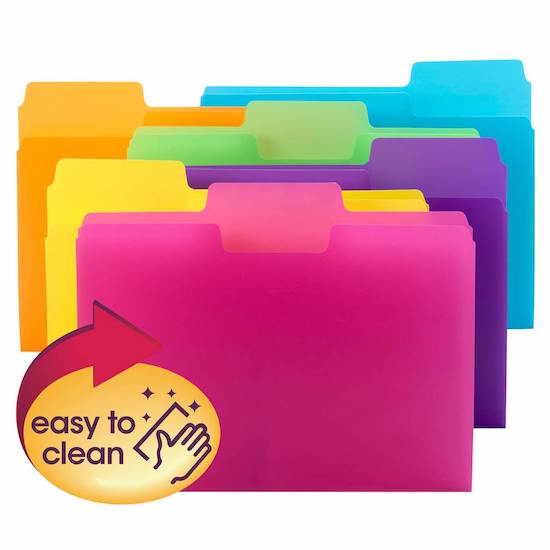
Oversize SuperTabs have a 90% larger labeling area than standard file folders, allowing you to use larger text, larger labels, or more lines of description. Although their tabs are larger than traditional file folders, they’ll nonetheless fit traditional vertical file drawers. These cheery Smead SuperTab® Poly File Folders run $17.06 at Smead or $16.44 at Amazon.
A WARNING ABOUT COLOR-CODING
I should note, I often warn against the potential problem of color-coding files. When a client invests in traditional boxes of assorted colored file folders (or boxes in multiple, different colors), I tend to worry about the Ralph Waldo Emerson’s quote, “Consistency is the hobgoblin of little minds.”
But wait, you might be thinking. Isn’t consistency the key to organizing?
When you color-code your folder system, it makes it easy to organize thematically. Green is biology (or family finances) and blue is literature (or insurance) and red is calculus (or medical records). But what happens when you need to make a new folder but run out of the color you need? For most people, this causes a breakdown in the system. Lacking the right folder, people often just stop filing!
But you see, Emerson’s entire quote is rarely given. It’s actually, “A foolish consistency is the hobgoblin of little minds, adored by little statesmen and philosophers and divines.”
But you are no fool! If lack of the right color is a problem for you or your student, just grab a different color folder and a Post-it! Note. Write a temporary label on the top, and stick it on the inside of the folder so that the label appears just about where a permanent label belongs. (Then go order a box of folders and get on with your day!)
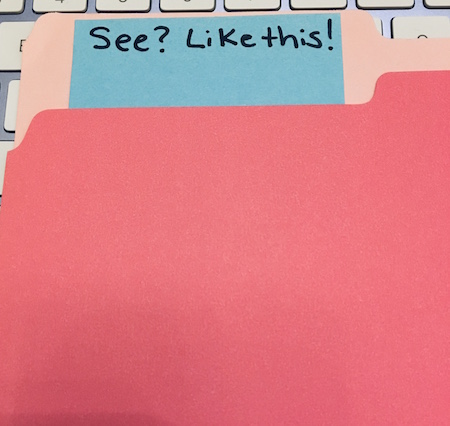
HOMESCHOOL CHEER
If your student is 8 rather than 18, and you’re still doing the home-schooling thing this year (either because you’d planned it or because everyone got sent home a few days into the school year), you might want a colorful, vertical solution for making your home-school “classroom” feeling a little more official.
I like to borrow this trick from teachers who are tight on space in their classrooms or don’t have a base of operations. Scholastic’s File Organizer Pocket Chart lets you create a bright, vertical HQ for your home-schooling student’s worksheets, problem sets, instruction sheets, and other handouts.
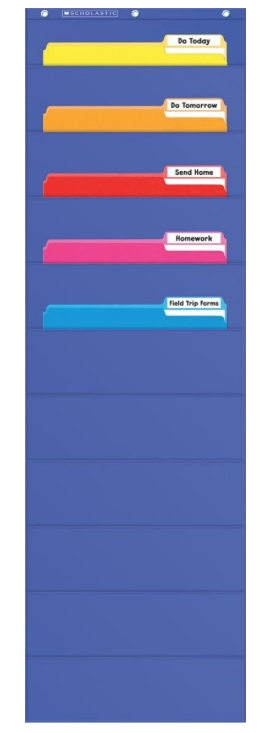
Just as teacher would do in the classroom, you can use the ten sturdy pockets to hold letter-size file folders. The pocket chart is lightweight but made of durable nylon, and measures 14″ wide by 46 1/2″ high. There are three reinforced grommets at the top for hanging the chart on the wall or the back of a door. The pocket chart runs $15 on Amazon.
ACCENTUATE THE POSITIVE WITH A POP OF COLOR
Colorful highlighting is a great way to make important points stand out. But have you or your student ever highlighted the wrong thing? It’s a bummer!
But did you know there are ERASABLE HIGHLIGHTERS? (I know! I can tell that you’re squealing, too!)
Crayola’s Take Note Erasable Highlighters let you highlight (or underline!) in six cheery colors (pink, orange, yellow, teal, blue, and purple). You can color-code your highlighting by class or use different colors for different types of information (yellow for the test, purple for a book report, etc.). And a set of six is only $5.99!






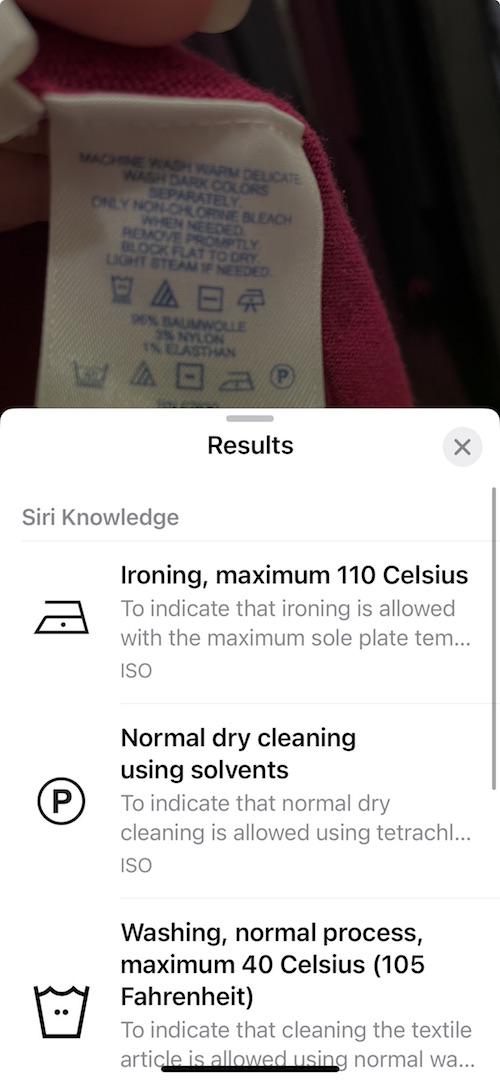

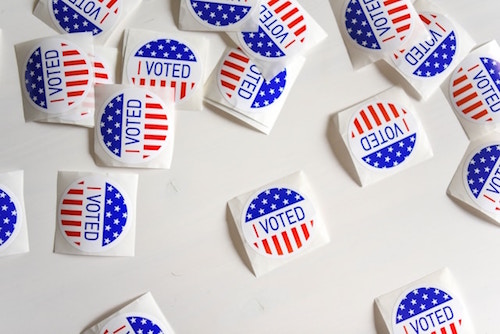







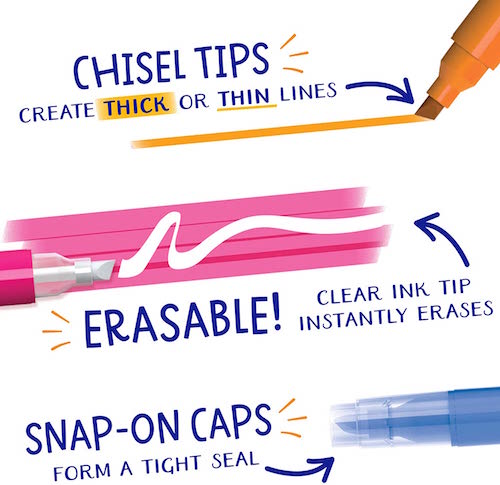
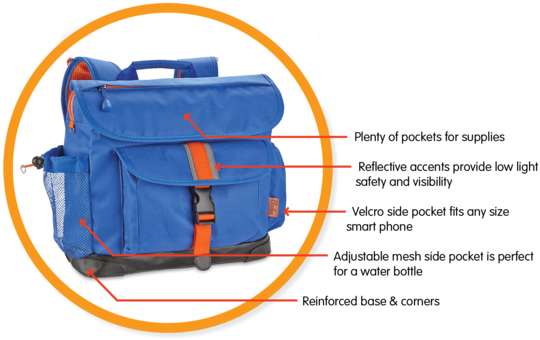
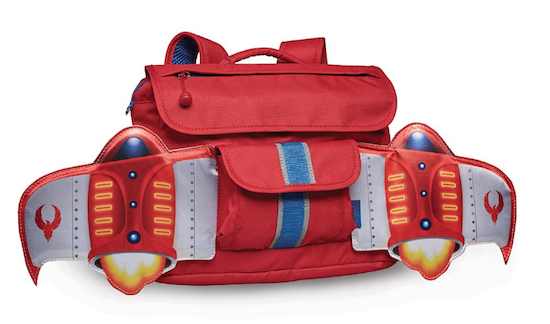



Follow Me